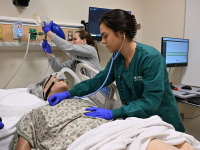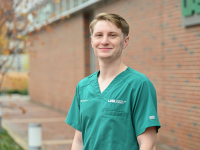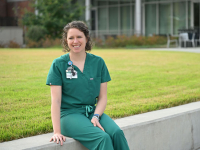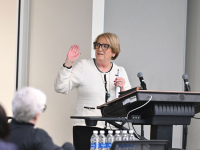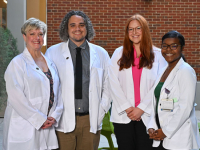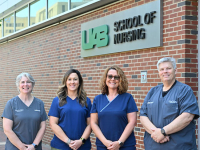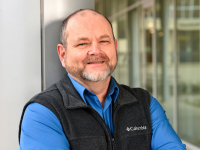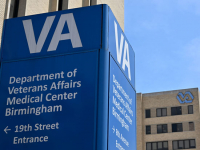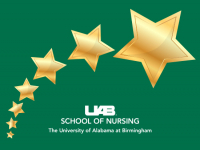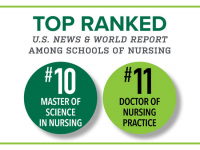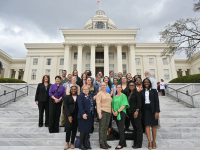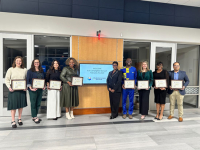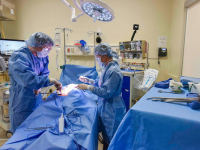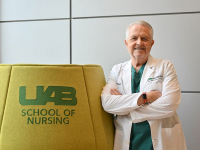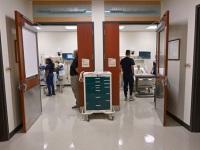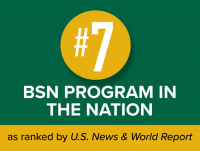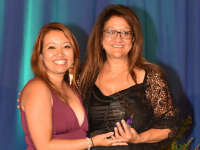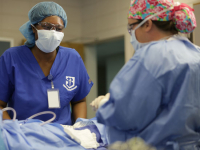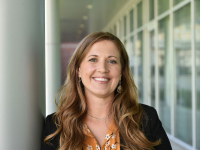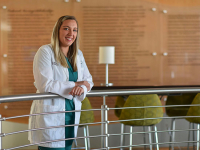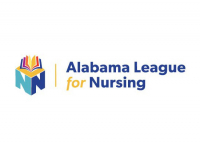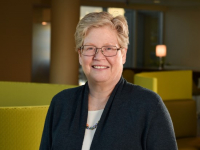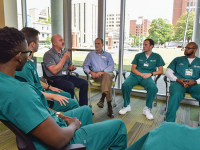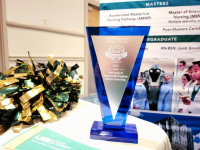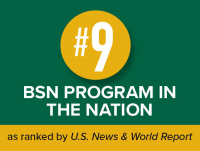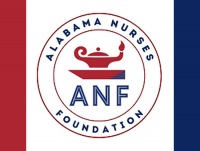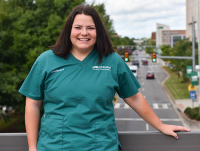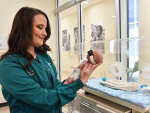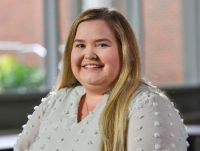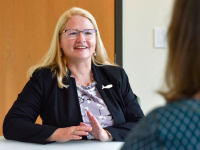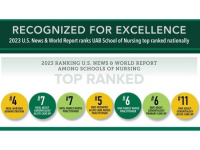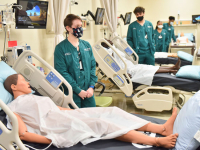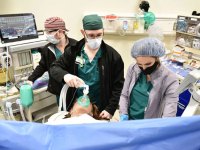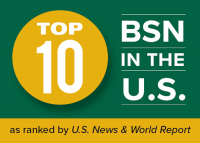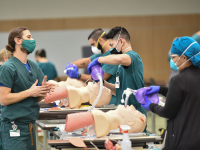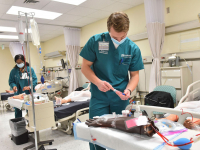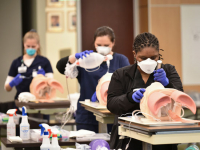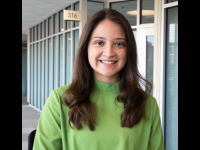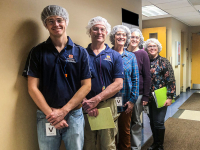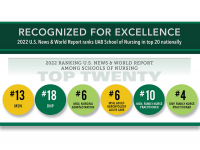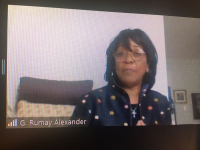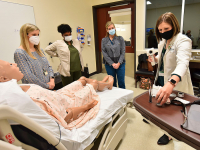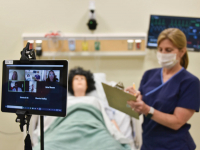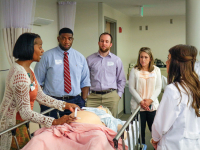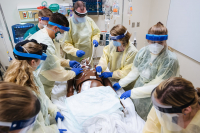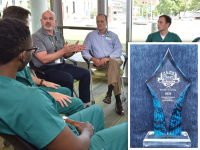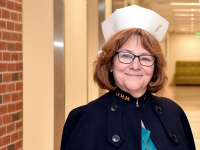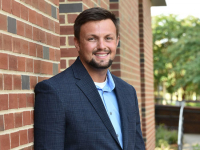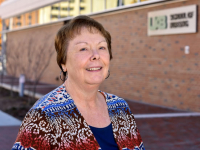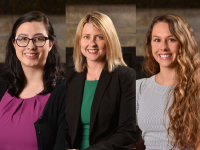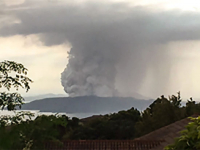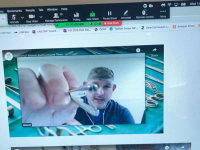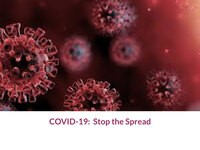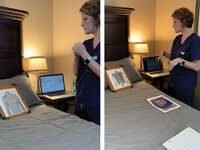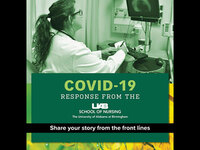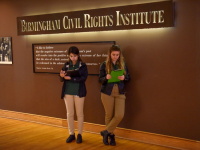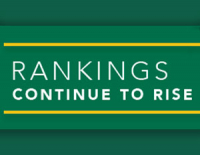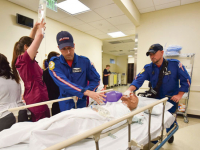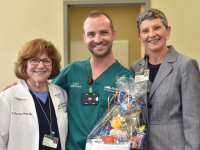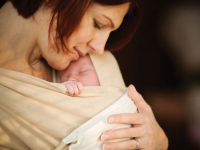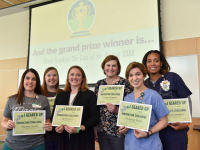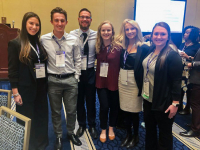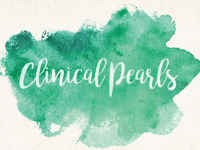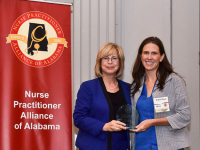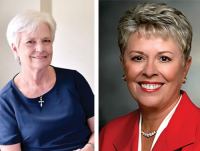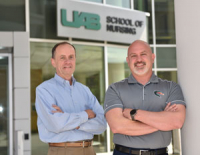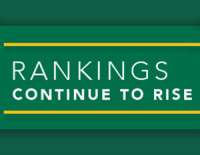Neonatal abstinence syndrome is a withdrawal condition that can occur in newborns exposed to opioids during pregnancy. Its symptoms can be different for every baby and include body shakes, excessive crying, poor feeding and others. The symptoms can last from one week to six months after birth. According to the March of Dimes, NAS can occur even when opioids are used as prescribed by a health care provider.
“The diagnosis of NAS has been around for a while, but it has been more in the spotlight in the last decade because of the widespread discussion around the opioid crisis,” said Assistant Professor Curry Bordelon, DNP, MBA, CNE, NNP-BC (DNP 2016). “Even with the increasing numbers of infants experiencing opioid withdrawal symptoms, there are not widespread treatment protocols covering the best ways to care for these patients. Standard medication protocols can increase care costs and length of stay, but if we turn to the literature, it shows nonpharmacologic treatments, like swaddling and skin-to-skin contact, can offer some of the same results. Preparing our students to use these approaches helps improve the quality of care for addiction’s tiniest patients.”
 Within the neonatal nurse practitioner Master’s of Science in Nursing (MSN) program, students learn to identify infant patients experiencing withdrawal and how to treat them with a holistic approach.
Within the neonatal nurse practitioner Master’s of Science in Nursing (MSN) program, students learn to identify infant patients experiencing withdrawal and how to treat them with a holistic approach.
This includes integrating the mother in the baby’s treatment plan with a focus on approaches that do not involve medications, including swaddling, feeding, skin-to-skin contact and minimizing noise and light to create a calming environment.
While developing the didactic curriculum on NAS, Bordelon also developed hands-on simulation — an opportunity for students to experience and apply their skills in a realistic scenario.
During the simulation, NNP students heard the consistent crying of a baby, spoke with a “sleep deprived” mother, and analyzed patient charts to determine the best treatment.
“This simulation encourages the provider to go through a methodical process when developing a care plan for newborns with NAS; this includes the mother,” Bordelon said. “Non-medication treatment options, however, may require a lot of infrastructure and nurse buy-in, which is why they are not universally utilized. You need to keep the rooms quiet with low light, low stimulation. You also need to have options for therapy, lactation, and private rooms.
“By teaching our students these methods, they’re able to provide a wider range of care options for these babies and their mothers.”
Involvement of mothers is essential, Bordelon added, as skin-to-skin contact and more frequent feedings are two supported treatments. In the past, stigma and preconceived notions often led to lack of maternal inclusion.
“For so long, babies with withdrawal symptoms have been approached with preconceived notions — that the family's presence is inconsistent. The stigma associated with these babies and their mothers often influence whether providers include the mother in the treatment plan,” Bordelon said. “Through this simulation and didactic content in the program, students increase empathy for the mothers and learn to build trust and engage them. Now that we have more experience dealing with this population, we’re advocating more for the babies and on their mothers’ side.”
This was the first year for the NAS simulation and Bordelon received positive feedback from the MSN students, who commented the realism of the experience and a systematic approach to addressing this growing health crisis. Moving forward, Bordelon said they plan to introduce the simulation earlier in the MSN program, to provide early experience with NAS care.
“Unfortunately, there’s no end to the opioid crisis in sight,” he added. “We want students even better prepared for clinicals so if we heighten their exposure and level of learning earlier, at the end, their transition to practice is easier.”
